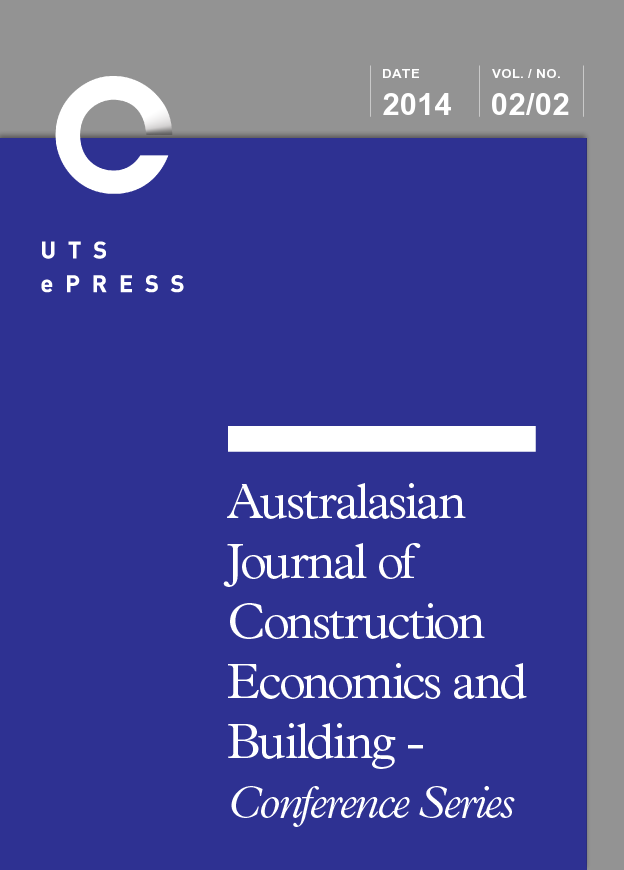Understanding the Building Certification System: A Need for Accreditation Reform
Main Article Content
Abstract
The building and construction industry makes a major contribution to the New South Wales (NSW) economy, with an annual input of 7.6% during 2010 that is projected to rise to 8.4% in 2020. Irrespective of the sector’s growth potential, it is experiencing a severe skills shortage across a range of professions including building certification. Interestingly, the certification sector and the regulatory environment in which it operates is yet to receive rigorous attention in academia and industry. In the context of NSW, the role of the accredited certifier is multifaceted and involves confirming that building work complies with environmental planning controls and the National Construction Code. The Building Professionals Board (BPB) is the statutory body responsible for accrediting these professionals. The BPB is partnering with the University of Newcastle to ameliorate the current skills shortage through the development of an evaluation instrument regarding: certifiers seeking to upgrade to a higher level of accreditation but who do not have a recognised qualification and/or are unable to obtain the practical experience relevant to progression; and associated professionals who, although not accredited, wish to become a certifier but lack the recognised qualifications and/or experience.
The proposed evaluation instrument will incorporate a mix of current technologies and approaches to address the current and likely future demographics of certifiers, and their preparedness to engage with and access novel IT technologies. This paper introduces the current certification environment and the technologies proposed to structure the evaluation instrument.
Keywords: Key Words: construction, building surveying, accreditation, education, assessment.
Article Details
Section
Authors who publish with this journal agree to the following terms:
a) Authors retain copyright and grant the journal right of first publication with the work simultaneously licensed under a Creative Commons Attribution License that allows others to share and adapt the work with an acknowledgement of the work's authorship and initial publication in this journal.
b) Authors are able to enter into separate, additional contractual arrangements for the non-exclusive distribution of the journal's published version of the work (e.g., post it to an institutional repository or publish it in a book), with an acknowledgement of its initial publication in this journal.
c) Authors are permitted and encouraged to post their work online (e.g., in institutional repositories or on their website) prior to and during the submission process, as it can lead to productive exchanges, as well as earlier and greater citation of published work (See The Effect of Open Access). Where authors include such a work in an institutional repository or on their website (ie. a copy of a work which has been published in a UTS ePRESS journal, or a pre-print or post-print version of that work), we request that they include a statement that acknowledges the UTS ePRESS publication including the name of the journal, the volume number and a web-link to the journal item.
d) Authors should be aware that the Creative Commons Attribution (CC-BY) License permits readers to share (copy and redistribute the work in any medium or format) and adapt (remix, transform, and build upon the work) for any purpose, even commercially, provided they also give appropriate credit to the work, provide a link to the license, and indicate if changes were made. They may do these things in any reasonable manner, but not in any way that suggests you or your publisher endorses their use.
